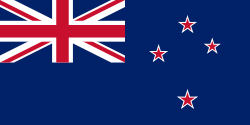This article has multiple issues. Please help improve it or discuss these issues on the talk page . (Learn how and when to remove these messages)
|
| Dominant sport: | Gaelic football |
|---|---|
| County colours: | Green and gold |
The Australasia County Board of the Gaelic Athletic Association (GAA), or Australasian GAA, or Gaelic Football & Hurling Association of Australasia is one of the county boards of the GAA outside Ireland, and is responsible for Gaelic games all across Australasia. It is also responsible for Australasian inter-state matches, primarily conducted in an annual weeklong tournament. The association is made up of the Australian state associations of New South Wales, Queensland, South Australia, Tasmania, Victoria and Western Australia, and the New Zealand associations of Wellington and Canterbury.
